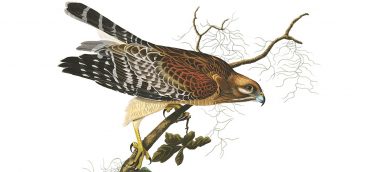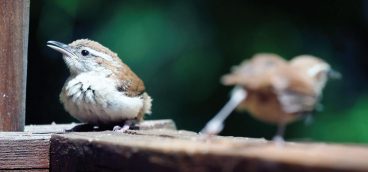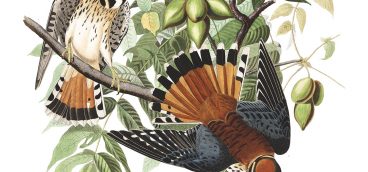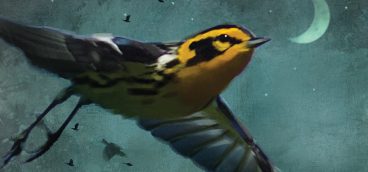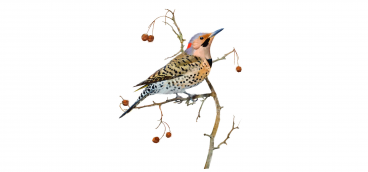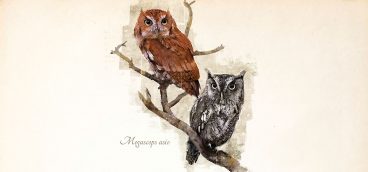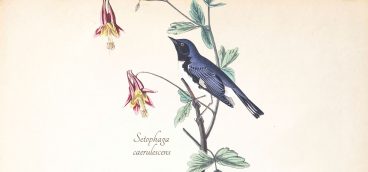The Evening Grosbeak – a Bright Winter Visitor
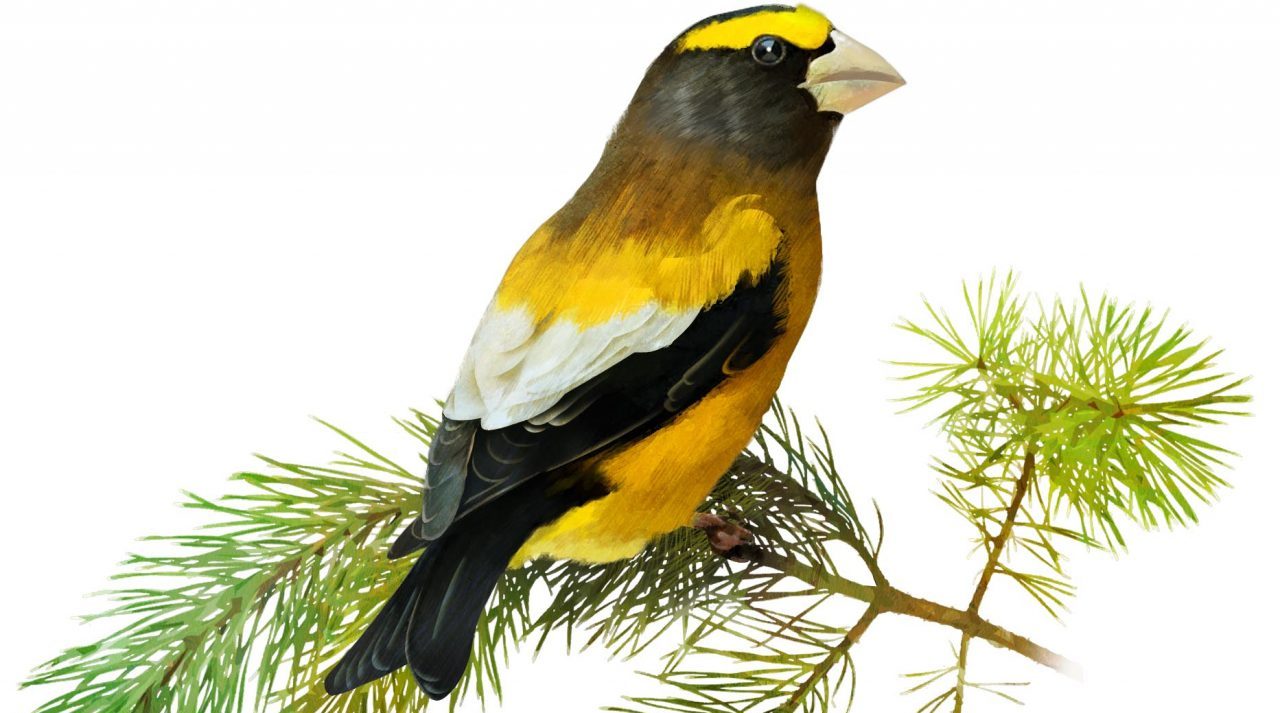
Coccothraustes vespertinus. Illustration: Daniel Marsula
March 1, 2023
The day I saw the evening Grosbeaks up along the Allegheny River, I was at a winter corporate retreat at a golf club. I was sitting at a conference table and outside, there were bird feeders. Grosbeaks were picking seeds at every opening, stacked one atop the other. I have no memory of what the people at the meeting were discussing, but I remember those birds.
Grosbeaks are what their name suggests: big-beaked seed eaters. Members of the finch family, grosbeaks are residents of northern forests and only dip into western Pennsylvania in occasional winter irruptions as they broadly seek food in the cold. Grosbeaks are uncommon, but when they do arrive on a snowy day, they light up the landscape and reveal their love for sunflower seeds, a repast they will eat from both tube and platform feeders. In some ways, they resemble our common American goldfinch, but on steroids. Grosbeaks are the bodybuilders of the finches, bulky and noticeably larger than most typical winter feeder birds.
Females are largely pale, with subtle washes of sun on their flanks. Males are bright and yellow bodied, with a streak of yellow at the eyebrow. Their faces are gray and in both the females and males, their nutcracker beaks are large and whitish, sometimes greenish. The males have yellow chests and black wings with white feathers on their backs. As I write this, I realize they are black and gold, a fine species to mirror the colors of our city’s sports teams. I don’t think they’re mascot-worthy, but once you spot this unusual visitor, often traveling in winter flocks, there’s no mistaking it for any other bird.
Grosbeaks are itinerant guests to our region, breeding in northern coniferous forests and also in the Rocky Mountains. In summer, they eat bugs like spruce budworm and other insects. They also eat fruits, seeds, and tree buds. Females build nests shaped like saucers, from twigs that form a shallow cup to hold two to five eggs, blue or blue-green with splotches. As with many songbirds, grosbeaks incubate for a fortnight or so. Once the eggs hatch, chicks are quick to mature, flying the nest within two weeks, give or take.
Amazingly, evening grosbeaks are not vocalists, or at least not compared to other songbirds. They have some chip notes and brief chirpy tweets, but they lack true songs, sounding more buzzy than birdy. And evening may simply be a common name without reference. The ones I saw were busy at the feeder during a gray Pittsburgh day.
Overall, populations of evening grosbeaks have taken a significant hit over the past 50 years, their overall numbers plummeting by some 75 percent due to logging, avian illnesses, and the effects of climate change on their preferred balsam fir habitat, at least in New England. As the boreal forests of Canada, so critical for many bird species, are changed by fluctuations in heat, moisture, and disease, grosbeaks may continue to be only the rarest of visitors to the Pittsburgh region, bright but fleeting ghost birds of what seemed like a more ecologically stable time.


